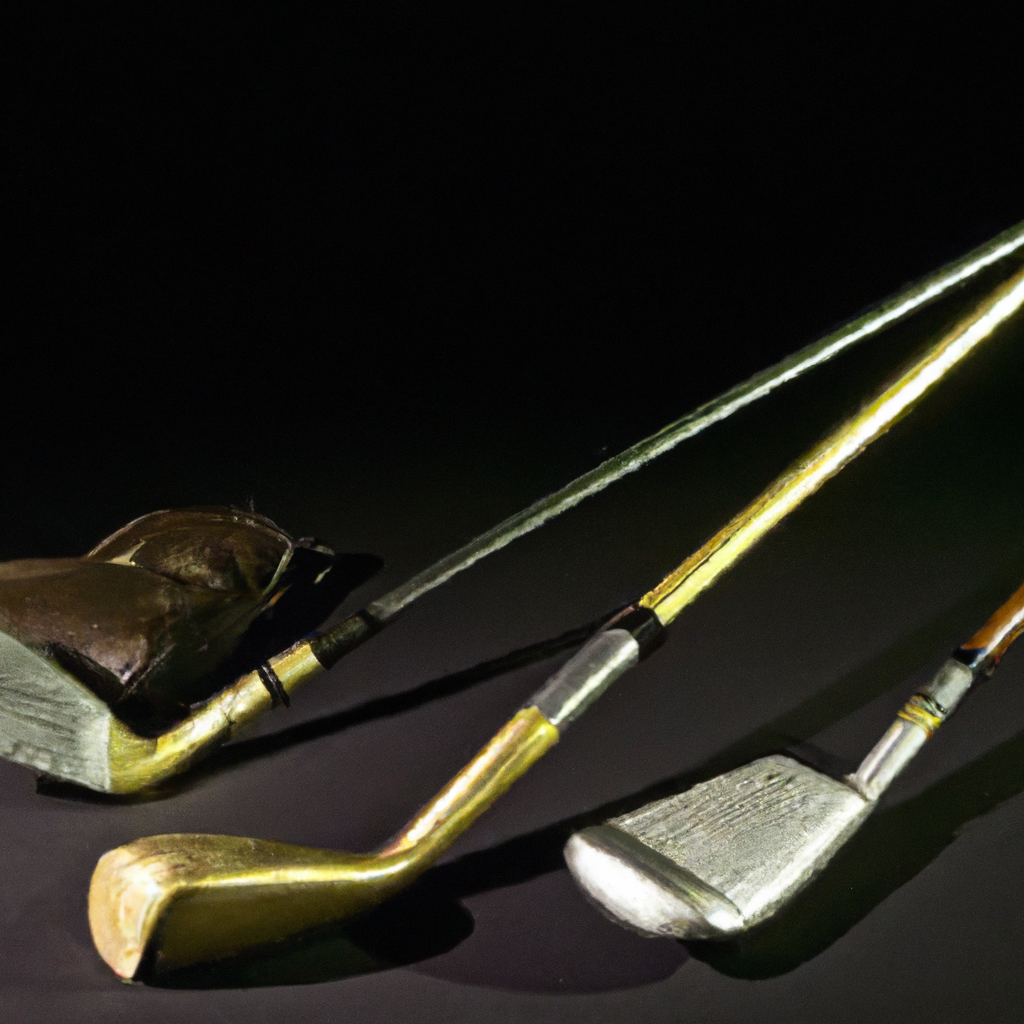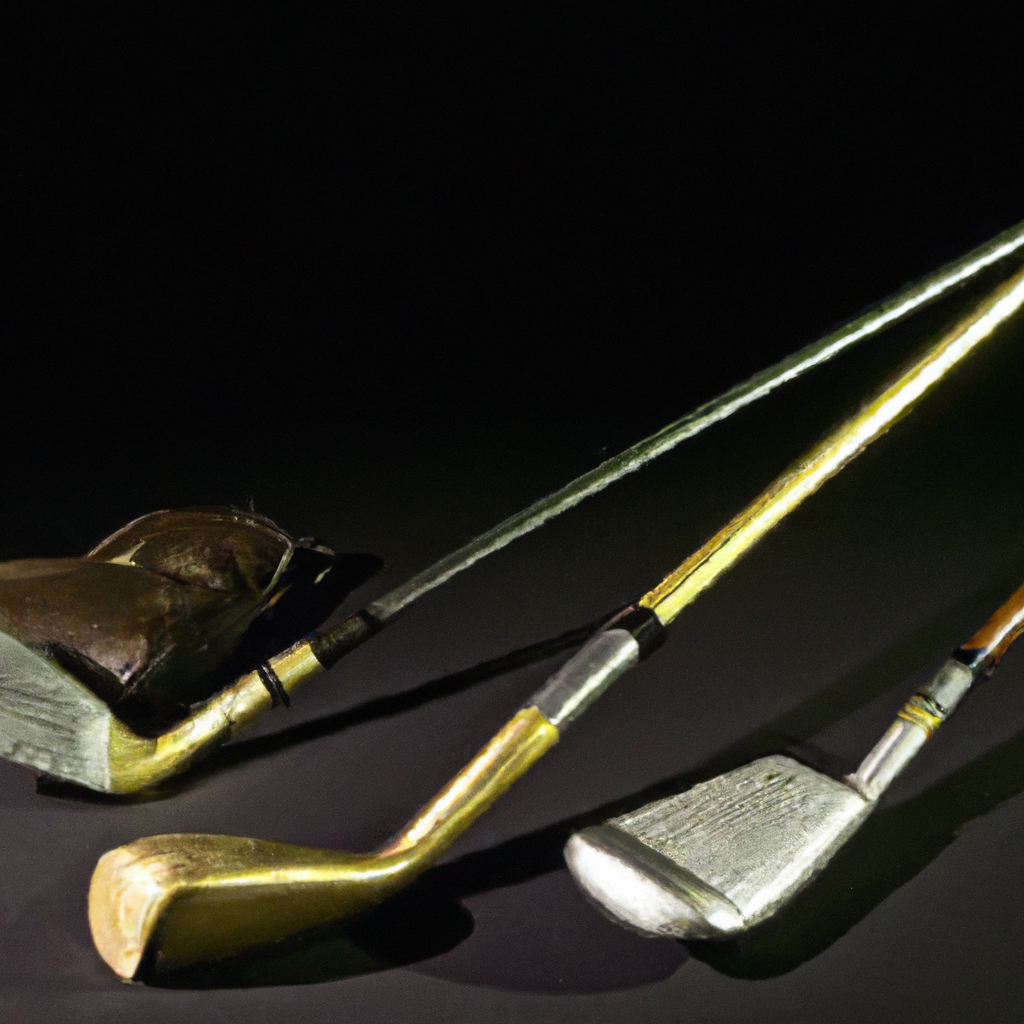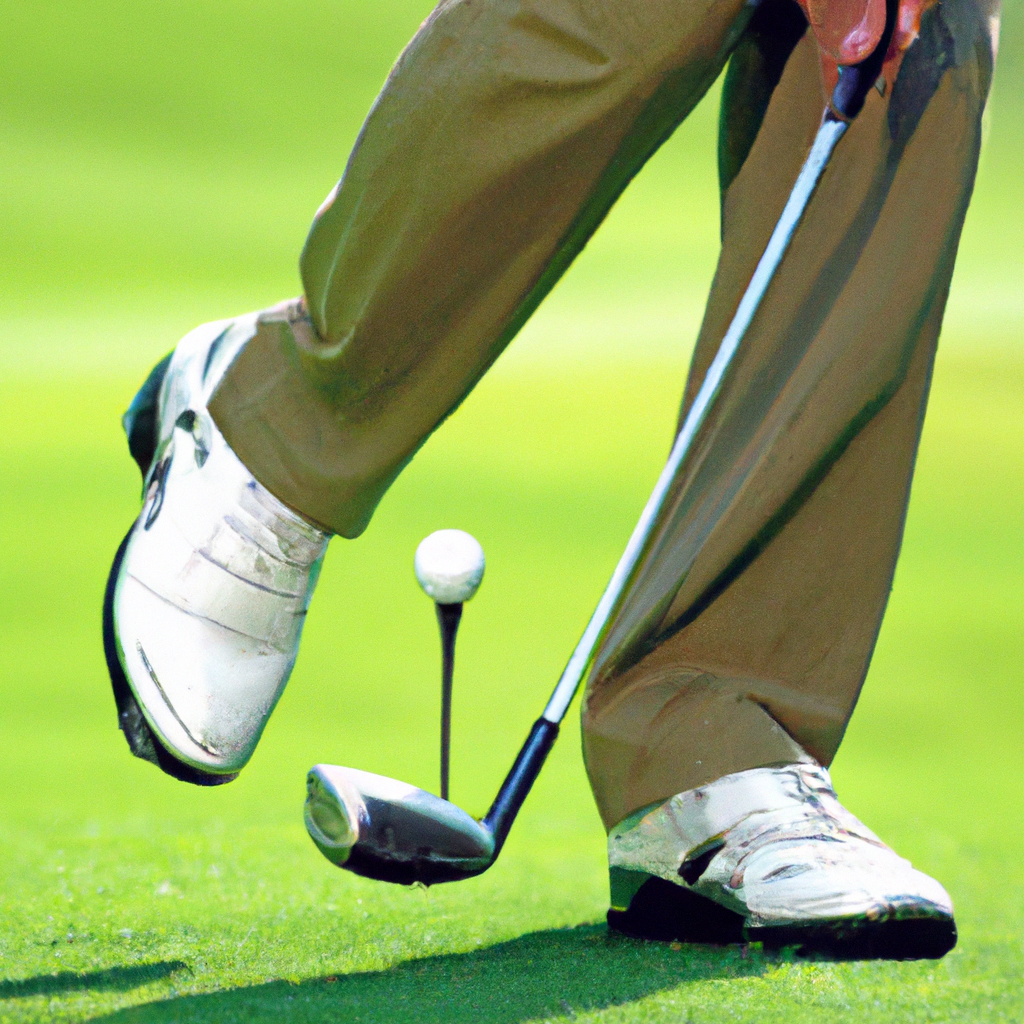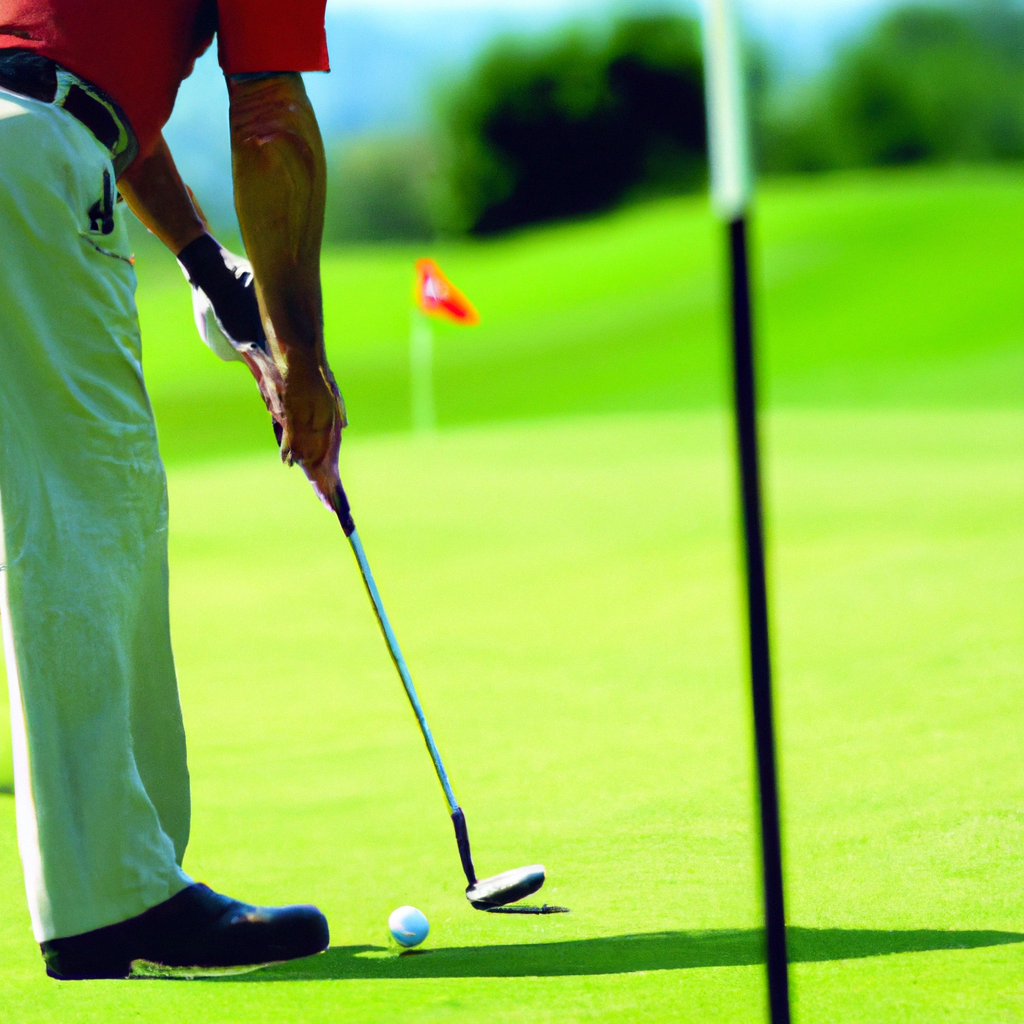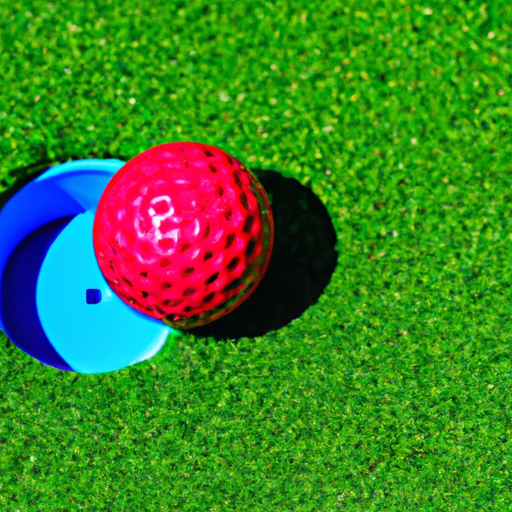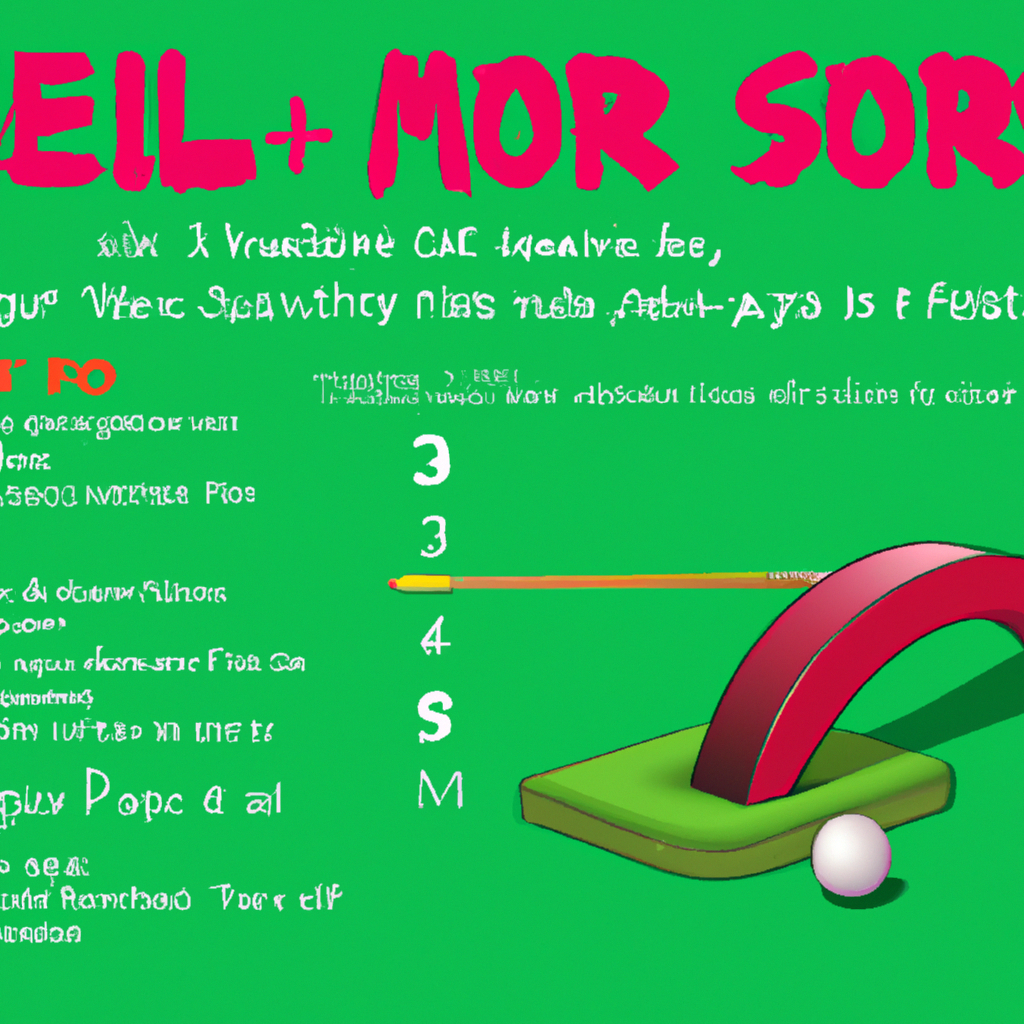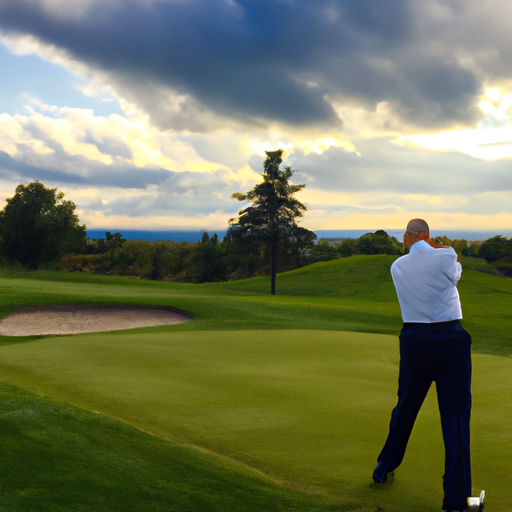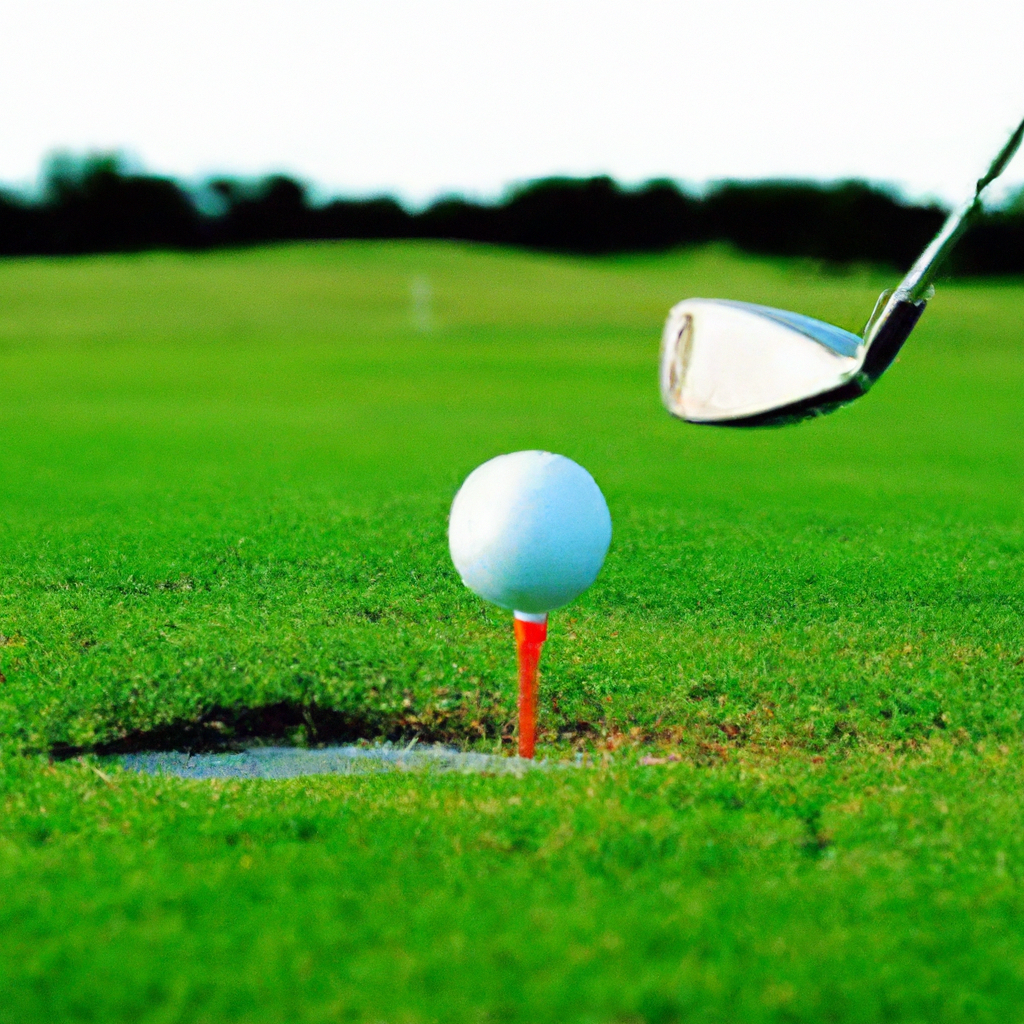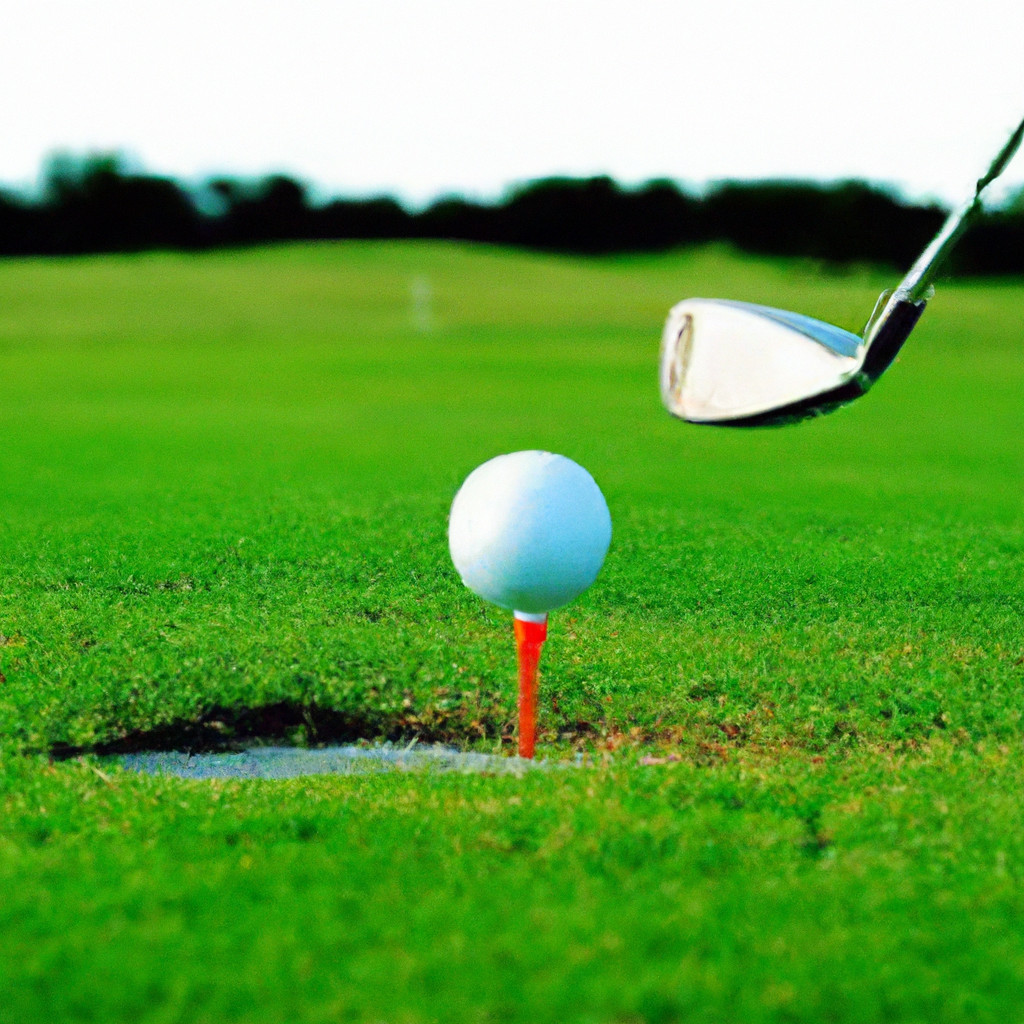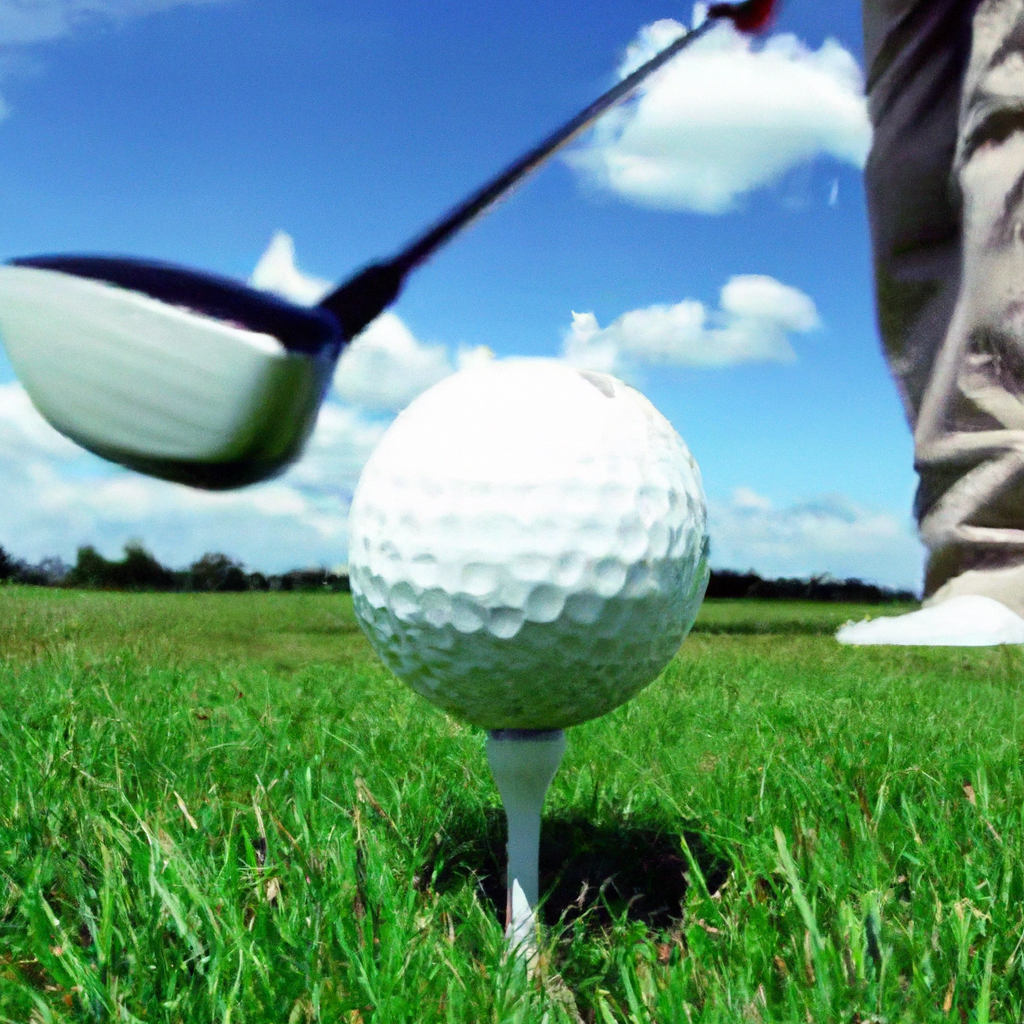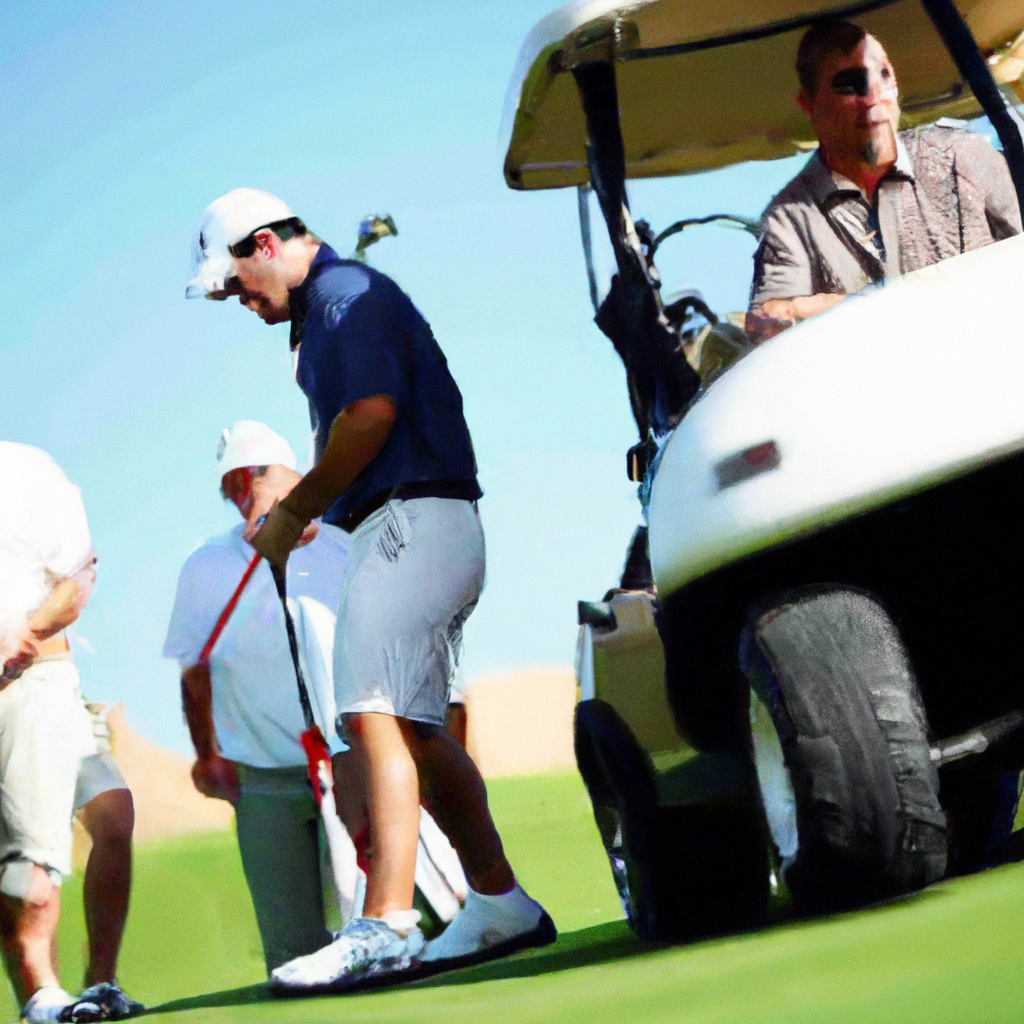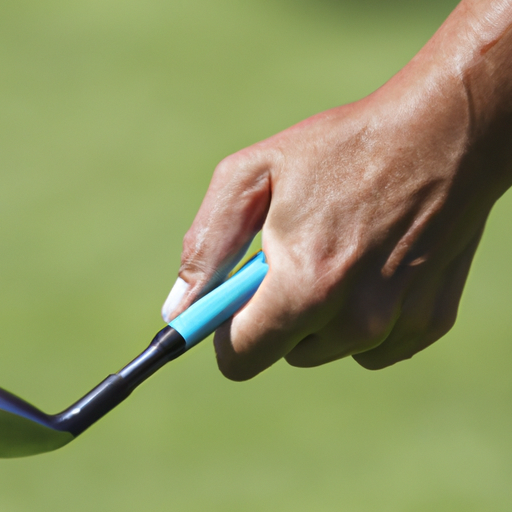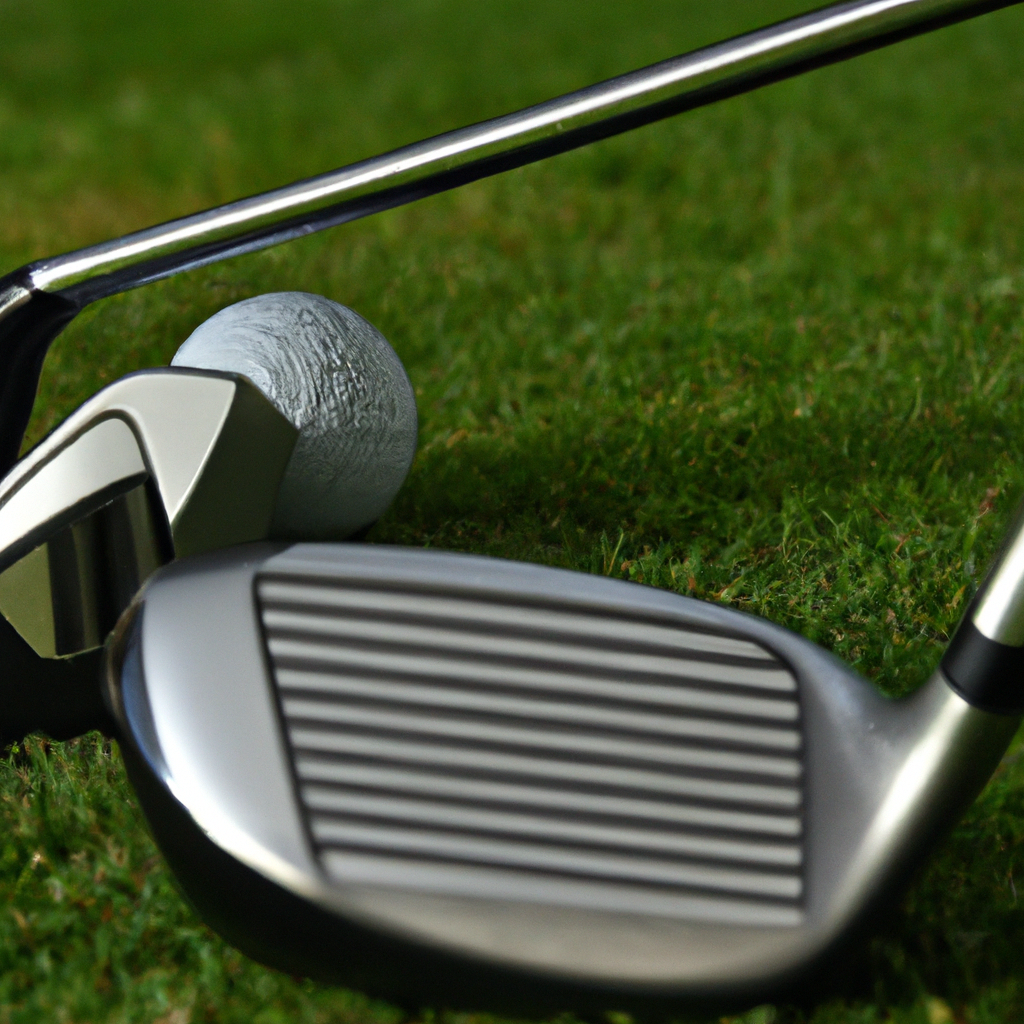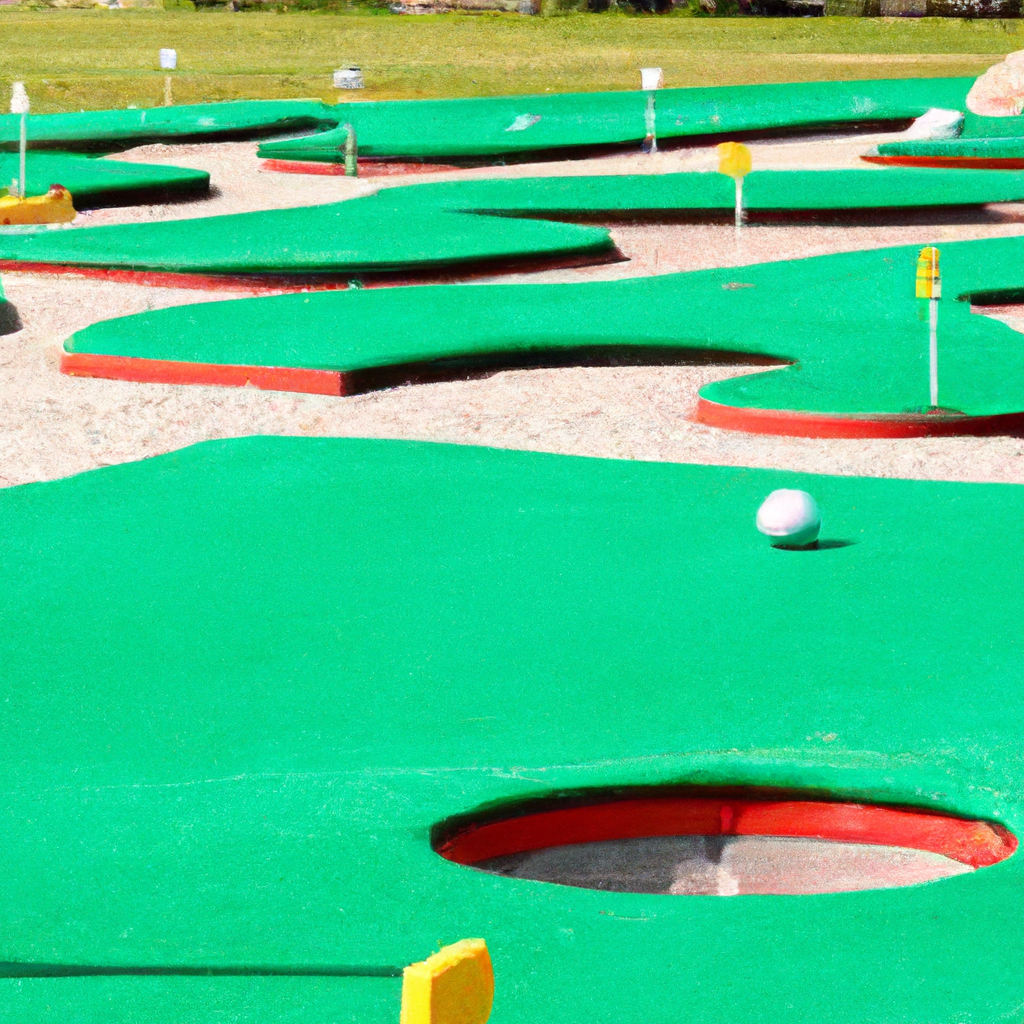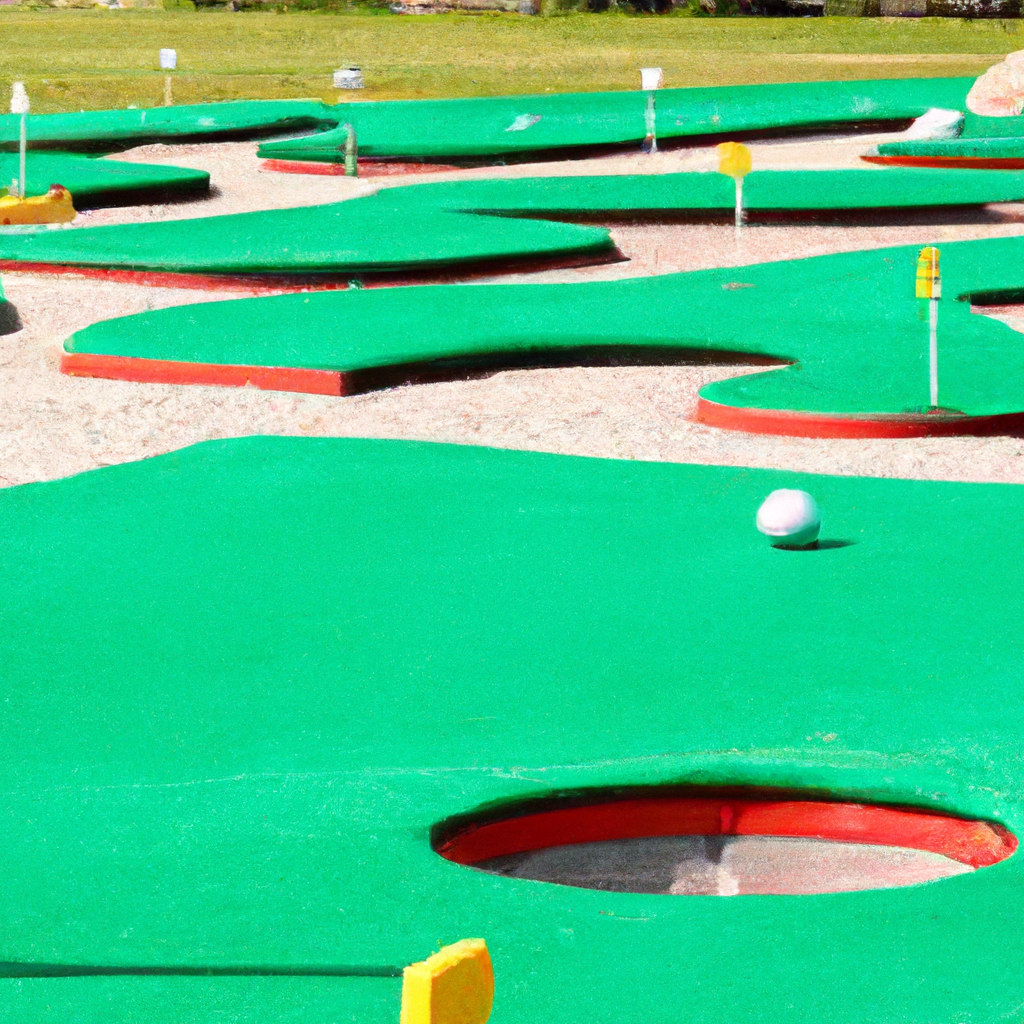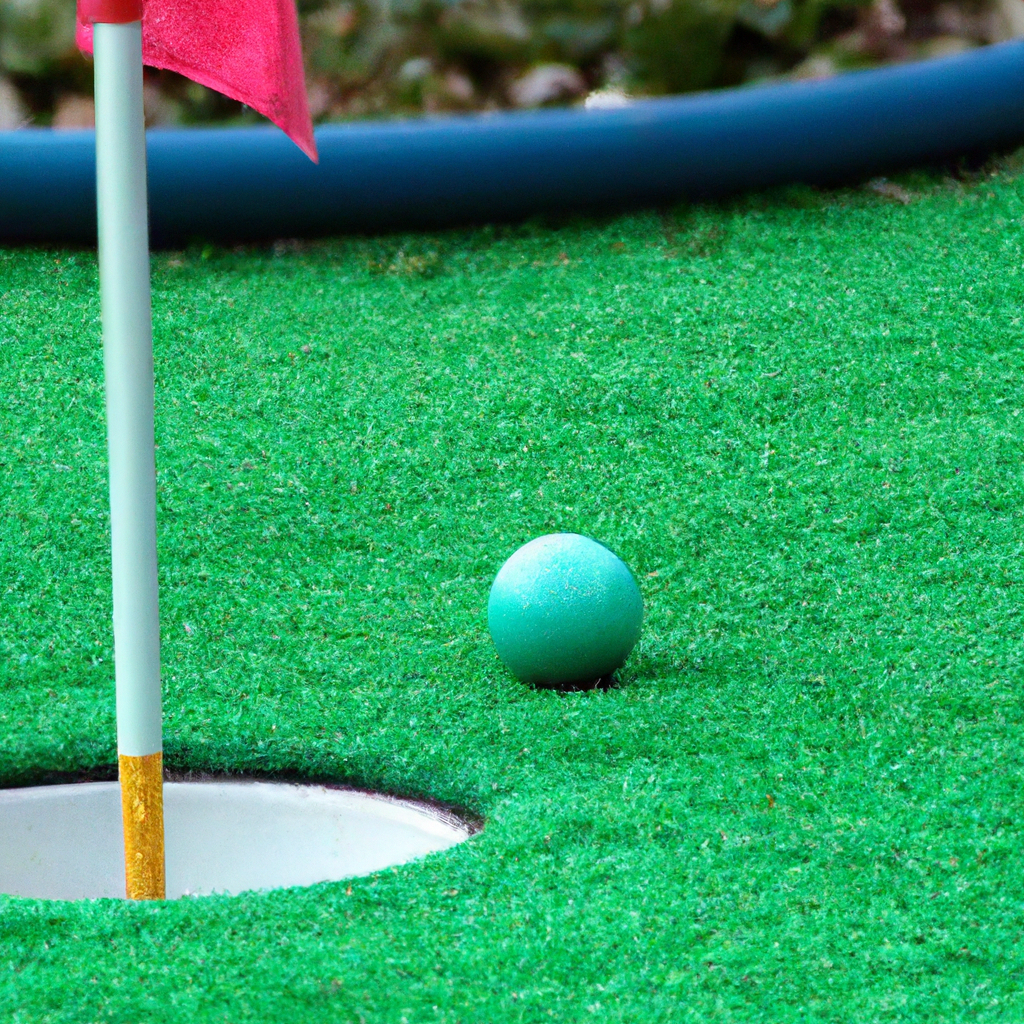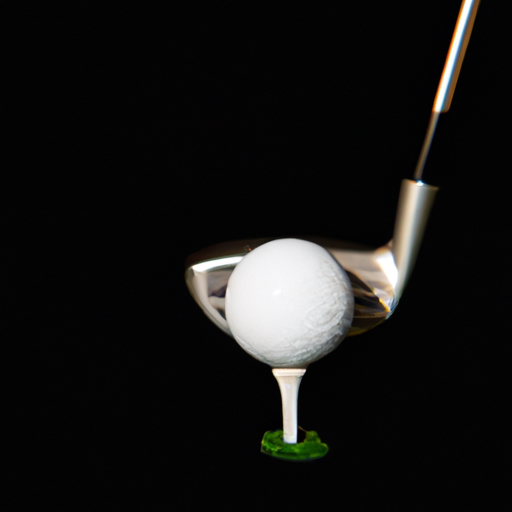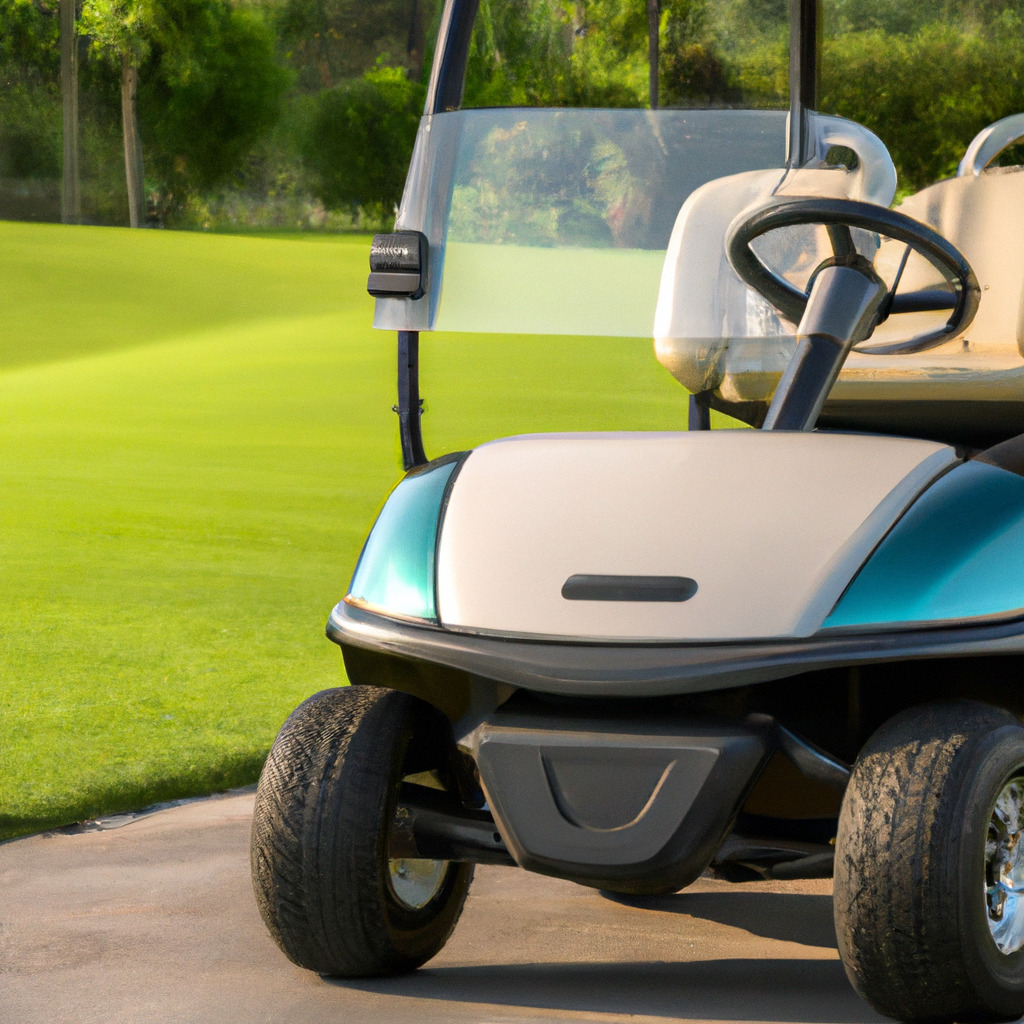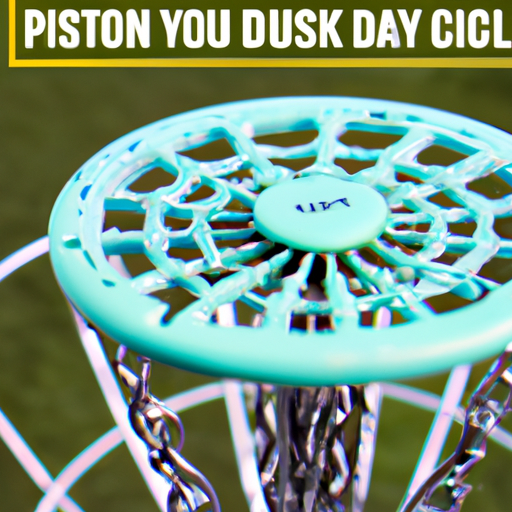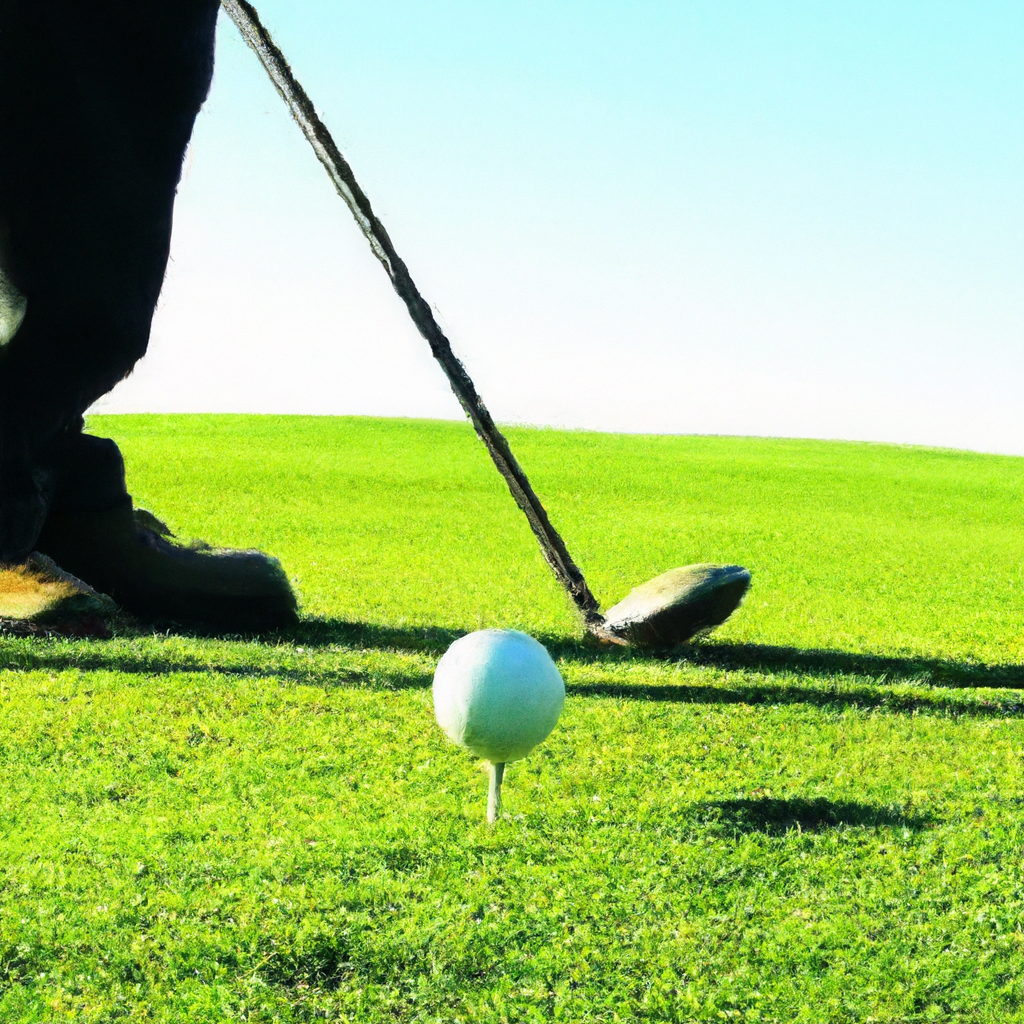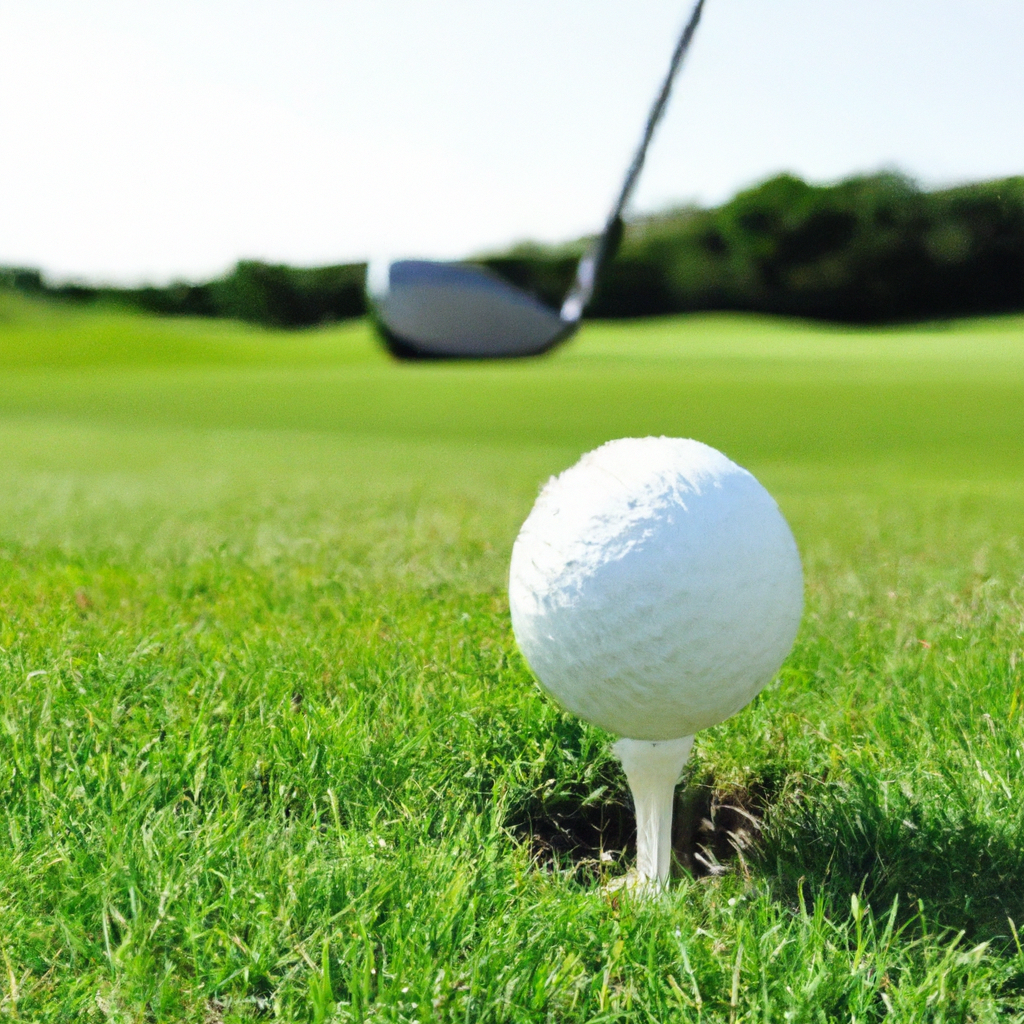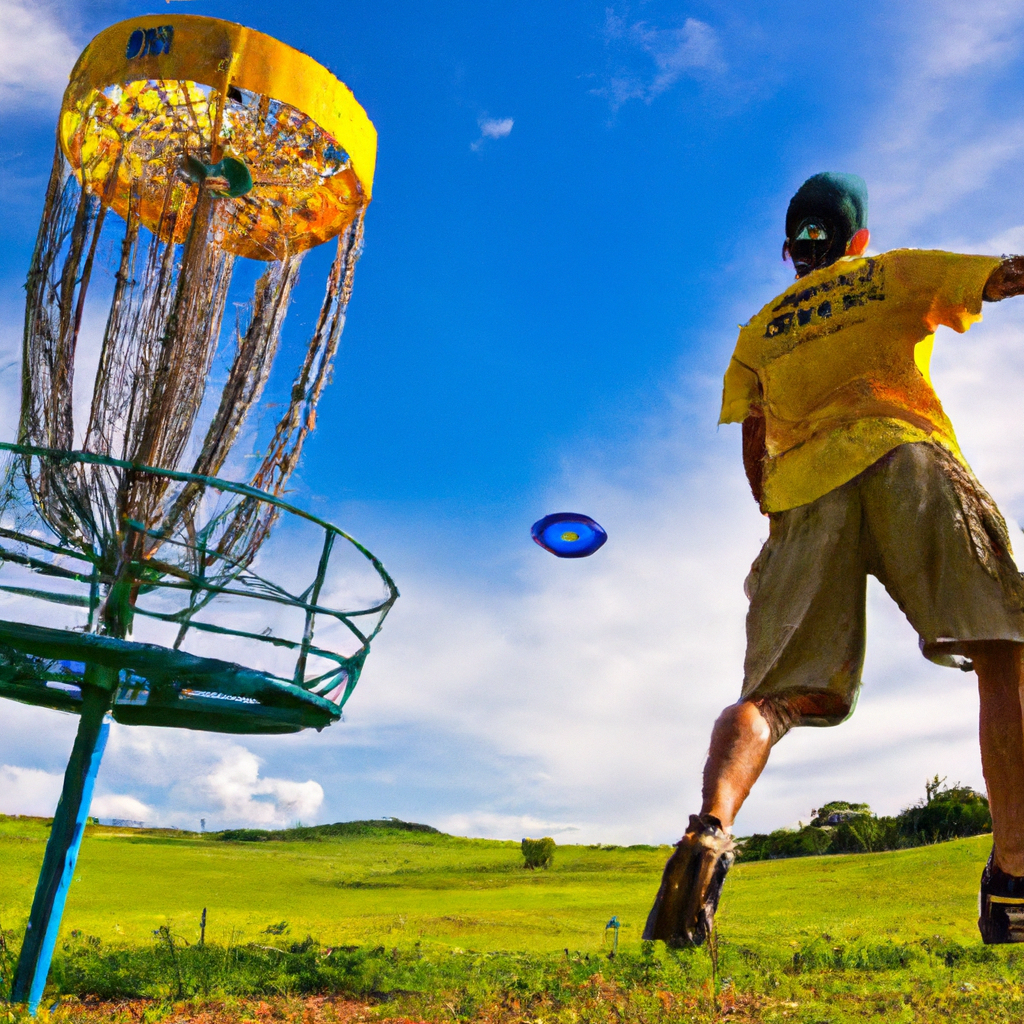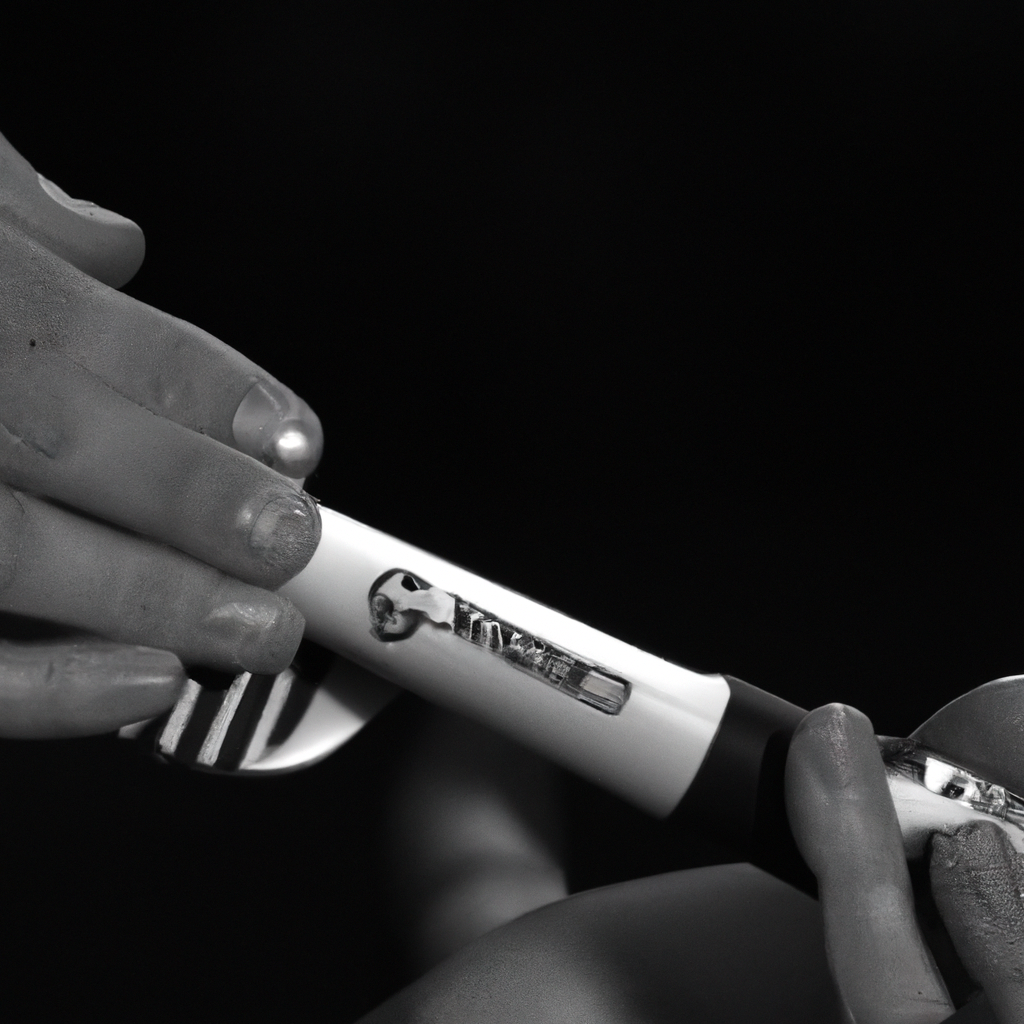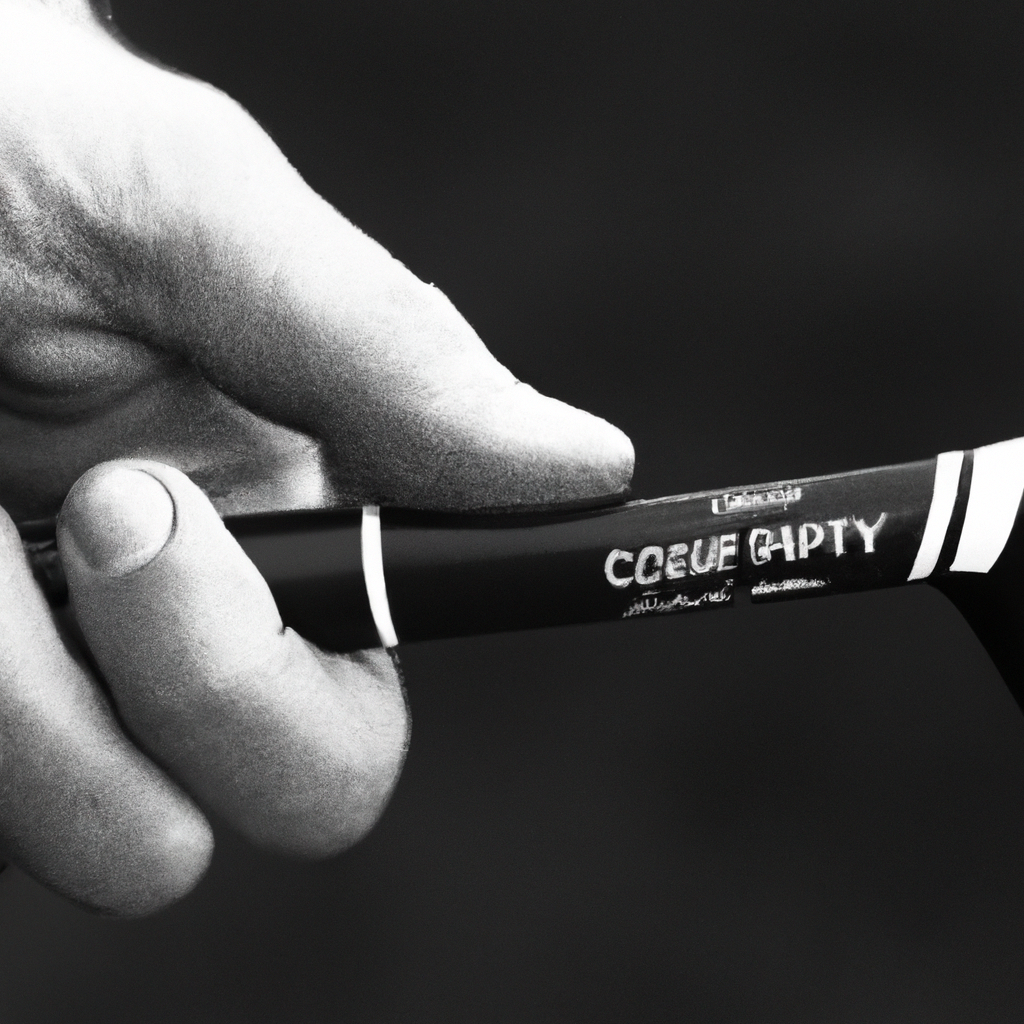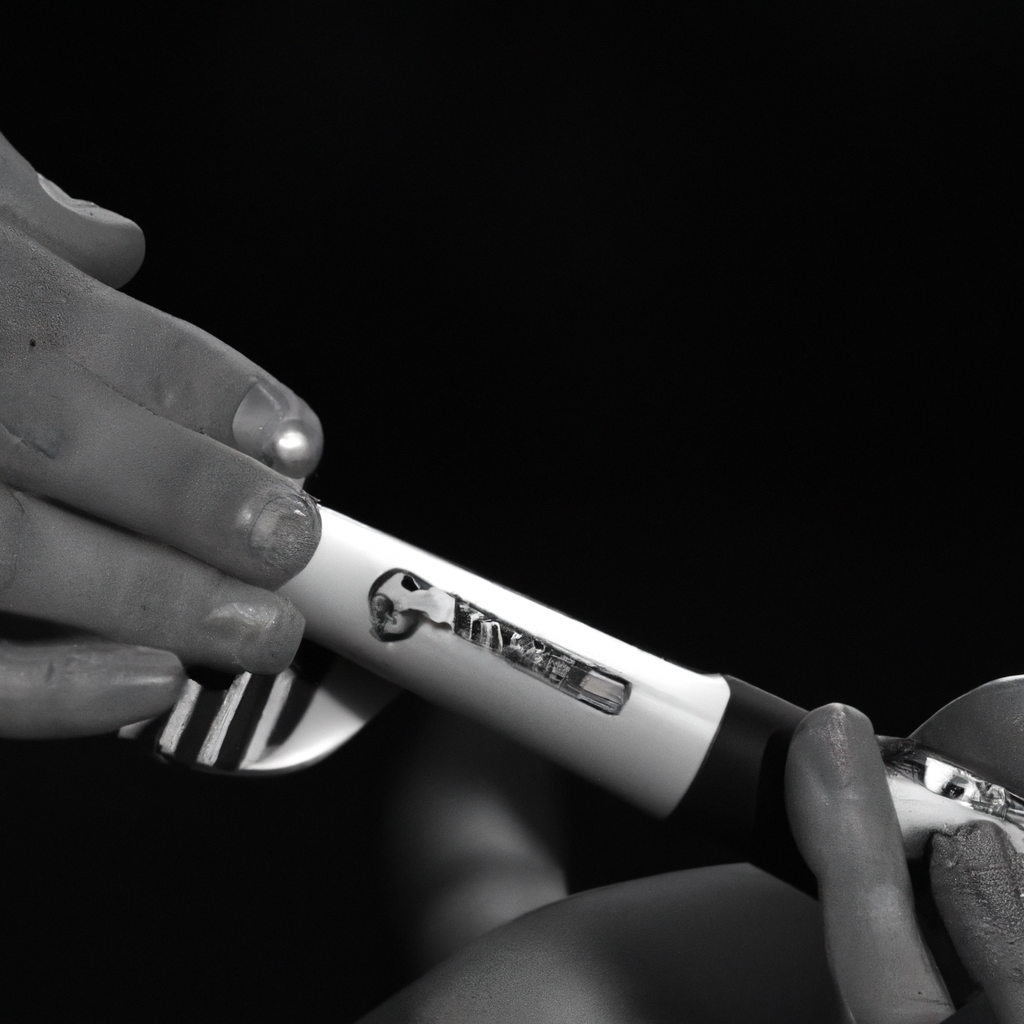So you’ve recently taken up disc golf and are eager to improve your skills, particularly when it comes to mastering the backhand technique. Well, look no further! In this article, we will guide you through the key steps and techniques required to develop a powerful and accurate backhand throw in disc golf. Whether you’re a beginner or have been playing for a while, this comprehensive guide will help you take your backhand game to the next level. Get ready to unleash your potential and dominate the course with your impeccable backhand technique!
Understanding the Backhand Technique
Disc golf is a fun and exciting sport that requires skill and precision. One of the key throwing techniques in disc golf is the backhand throw. Mastering the backhand technique is essential for achieving accuracy, distance, and control in your throws. In this comprehensive guide, we will break down the backhand technique into different sections to help you understand and develop this important skill.

1.1 Grip and Disc Selection
The first step in mastering the backhand technique is to understand the proper grip and disc selection. The grip is crucial as it determines how you control the disc during the throw. There are various types of grips that disc golfers use, such as the power grip, fan grip, and modified fan grip. Experiment with different grips and find the one that feels most comfortable and secure in your hand.
When it comes to disc selection, it’s important to consider factors such as disc type, weight, and stability. Different discs have different flight characteristics, so it’s vital to choose a disc that suits your throwing style and skill level. Beginners are advised to start with understable discs, which tend to fly straighter and require less power to throw accurately.
1.2 Body Positioning
Body positioning plays a crucial role in executing an effective backhand throw. Your stance and foot placement should provide a stable base for generating power and maintaining balance throughout the throw. Stand with your feet shoulder-width apart, with your non-dominant foot slightly ahead of the other. This balanced stance allows for a better weight transfer during the throwing motion.
1.3 The Fundamentals of the Backhand Throw
To master the backhand technique, it’s essential to develop a strong foundation in the fundamental mechanics of the throw. The basic motion involves a pulling action as you propel the disc forward. Your arm should remain straight during the reach-back and pull-through, generating power from your body’s rotational movement. Practice a smooth and controlled pull-through to ensure a consistent release and accurate flight path.
1.4 Common Mistakes to Avoid
As with any skill, there are common mistakes that beginners often make when learning the backhand technique. These mistakes can hinder your progress and affect the flight of the disc. Two common errors to watch out for are grip lock and grip slip. Grip lock occurs when your grip is too tight, impairing your wrist snap and causing the disc to stall in the air. Grip slip, on the other hand, happens when you have an inadequate grip, resulting in a loss of control and accuracy.
2. Developing Proper Grip and Disc Selection
Now that we understand the importance of grip and disc selection, let’s dive deeper into these topics and explore different techniques and considerations.
2.1 Types of Grips
There are several types of grips that disc golfers use, each offering its own advantages and disadvantages. The power grip is the most commonly used grip in disc golf, as it provides a secure hold and allows for maximum power generation. To execute the power grip, place your thumb along the inner rim of the disc, while your four fingers curl tightly underneath, applying pressure on the disc’s flight plate.
The fan grip is another popular grip that offers more control and finesse. In this grip, the disc rests against the pads of your fingers, while your thumb is positioned on top of the flight plate. The modified fan grip is a variation of the fan grip that also provides a balance between control and power. Experiment with different grips and find the one that feels most comfortable and natural for you.
2.2 Finding the Right Disc for Backhand Throws
When it comes to disc selection, there is a wide range of options available, each designed for specific flight characteristics. Understanding the different types of discs and their flight ratings will help you find the right disc for your backhand throws.
There are three main categories of discs: putters, midranges, and drivers. Putters are designed for short-range throws and approaches. Midranges offer both control and distance, making them suitable for mid-range shots. Drivers are designed for maximum distance and overall power.
Within each category, discs also come in different stability levels. Stability refers to how a disc behaves during flight, with stable discs flying straighter and understable discs exhibiting more turn and fade. It’s important to choose a disc that matches your skill level and throwing style. Beginners typically benefit from using understable discs, as they require less power to achieve proper flight and are more forgiving of off-center releases.
2.3 Understanding Disc Stability and How it Relates to Backhand
Disc stability is a crucial factor in achieving accurate and consistent flight paths with your backhand throws. Stability is determined by a disc’s design and its resistance to certain forces during flight. A disc’s stability is rated on a scale from understable to overstable.
An understable disc has a tendency to turn to the right (for right-handed throwers) during the early part of its flight and then fade to the left towards the end. These discs are ideal for beginners as they require less power and effort to achieve straight throws. On the other end of the spectrum, overstable discs have a strong tendency to resist turning and fade hard to the left. They require more power and control to throw accurately.
Finding the right disc stability for your backhand throw is crucial for achieving the desired flight path. Too understable of a disc may result in unpredictable turns and inconsistent throws, while an overstable disc may resist turning and limit distance potential. Experiment with different discs and stability levels to find the right combination that suits your throwing style and skill level.
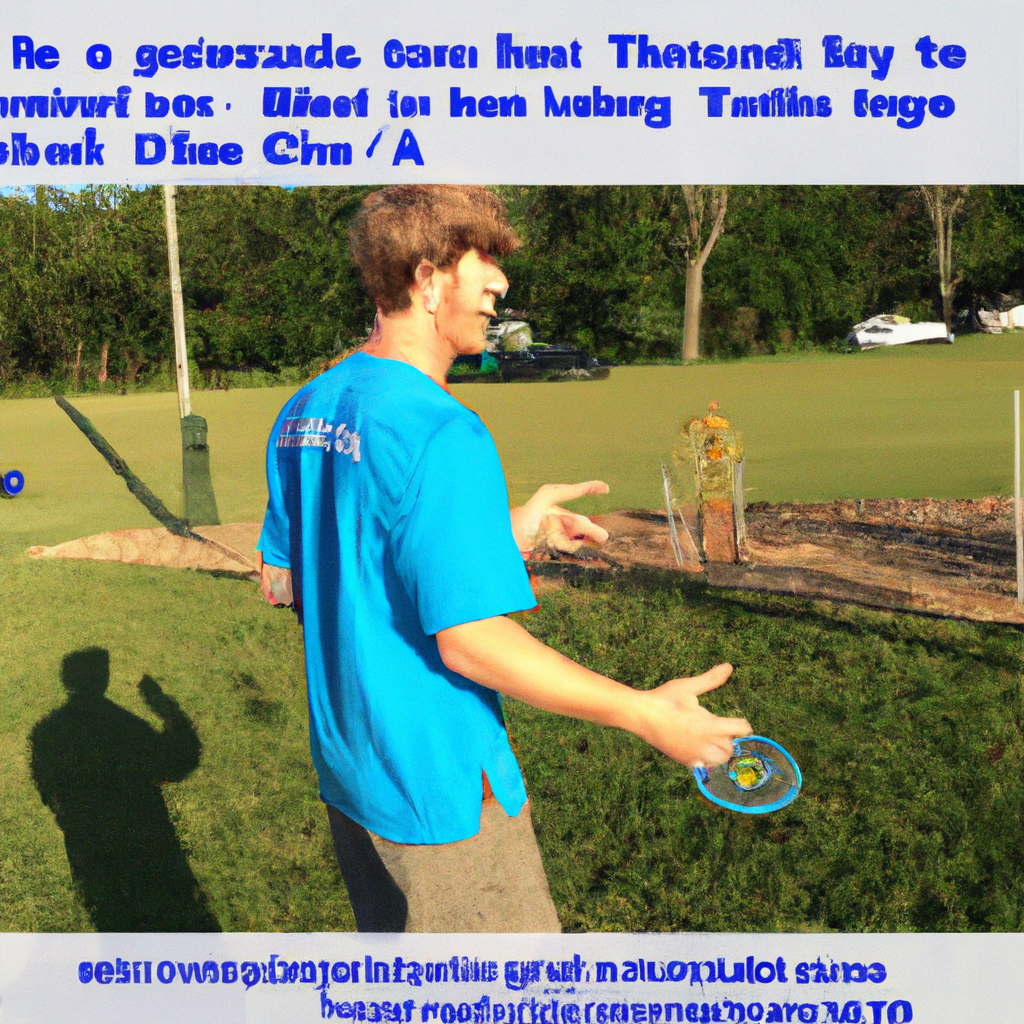
3. Perfecting Body Positioning for Backhand Throws
In the backhand throw, proper body positioning plays a significant role in generating power, maintaining balance, and achieving accuracy. Let’s explore the different elements of body positioning for backhand throws.
3.1 Stance and Foot Placement
Your stance and foot placement form the foundation of your backhand throw. As mentioned earlier, standing with your feet shoulder-width apart and your non-dominant foot slightly ahead of the other is a balanced stance that allows for optimal weight transfer during the throw. This positioning provides stability and helps generate power by utilizing the lower body.
During the throwing motion, it’s important to maintain a firm stance, allowing for a controlled weight shift and follow-through. Avoid leaning too far forward or backward, as it can throw off your balance and adversely affect the flight of the disc. Practice finding a comfortable and stable stance that allows you to execute a smooth and controlled throw.
3.2 Hip and Shoulder Alignment
Proper hip and shoulder alignment are crucial for maximizing power and accuracy in your backhand throws. As you pull the disc through the throwing motion, your hips and shoulders should rotate in unison, generating torque and transferring energy to the disc.
Start the throw with your hips and shoulders facing away from the target. As you reach the power zone, initiate the rotation of your hips and shoulders towards the target. The lower body should drive the upper body, allowing for a smooth and powerful throw. Keep your shoulders level throughout the throwing motion to avoid tilting, which can affect the release angle and flight of the disc.
3.3 Arm Position and Reach-back
The arm position and reach-back are important aspects of body positioning that directly impact the power and accuracy of your backhand throws. As you reach back, your throwing arm should extend fully, creating a long and smooth arc. This motion prepares your body for generating power in the subsequent pulling phase.
During the reach-back, it’s important to keep your arm on a straight line, avoiding any unnecessary deviations. This straight line path allows for a consistent and efficient transfer of power from your body to the disc. Maintaining a relaxed and loose grip on the disc during the reach-back helps reduce tension and allows for a full extension of the arm.
3.4 Weight Shift and Follow-through
Proper weight shift and follow-through are crucial for achieving maximum distance and accuracy in your backhand throws. During the throwing motion, initiate the weight shift from your back leg to your front leg, transferring your body’s momentum to the disc. This weight shift, combined with the rotational movement of your hips and shoulders, generates power and speed in the throw.
As you release the disc, continue the throwing motion with a controlled follow-through. Your arm should extend fully towards the target, with your palm facing up, allowing the disc to release smoothly. A complete and balanced follow-through helps maintain accuracy and control, while also reducing the risk of injury.
4. Mastering the Fundamentals of the Backhand Throw
Having a solid understanding of the grip, disc selection, and body positioning sets the foundation for mastering the backhand technique. Let’s dive deeper into the key fundamentals of the backhand throw to help you refine your technique and improve your throws.
4.1 Establishing a Smooth Pull-through
A smooth and controlled pull-through is a fundamental aspect of the backhand throw. The pull-through refers to the motion of pulling the disc from the reach-back position towards the target. To establish a smooth pull-through, focus on maintaining a relaxed and loose grip on the disc. Tension in your grip can hinder the fluidity of the motion and affect the release.
As you initiate the pull-through, make sure to engage your lower body by initiating the rotational movement of your hips and shoulders. This coordinated movement generates power and transfers it to the disc. Keep your arm on a straight line path and let the rotational movement of your body propel the disc forward. Practice a smooth and gradual acceleration throughout the pull-through, ensuring a fluid and controlled release.
4.2 Timing and Release Point
Timing and release point are crucial aspects of the backhand throw that affect the accuracy and flight path of the disc. To achieve proper timing, the disc should be released at the right point in your throwing motion, maximizing your power and accuracy. The release point typically coincides with the moment when your arm is fully extended towards the target, with your wrist and hand in a neutral and relaxed position.
Timing your release requires practice and a good understanding of your throwing mechanics. Experiment with different release points and observe how they affect the flight of the disc. Pay attention to the angle of release as well, as subtle adjustments can result in significant changes in the flight path.
4.3 Generating Power and Distance
Generating power and distance in your backhand throws is a combination of proper body mechanics, timing, and technique. The power in your throw comes from the rotational movement of your lower body, the extension of your arm during the pull-through, and the acceleration of the disc as it leaves your hand.
Focus on initiating the power from your hips and shoulders, allowing the rotational movement to transfer energy to your arm and the disc. As you pull the disc through, gradually increase the speed and acceleration, allowing for a powerful release. Practice a controlled and fluid throwing motion to optimize power and distance.
4.4 Utilizing Wrist Snap for Added Spin
The wrist snap is an important technique that adds spin and stability to your backhand throws. As you release the disc, a quick and controlled snap of the wrist imparts additional spin, helping the disc maintain a more stable flight path.
To execute a proper wrist snap, focus on a firm but relaxed wrist during the release. As your hand leaves the disc, quickly flick your wrist downwards, creating a snapping motion. This action adds spin to the disc and allows for enhanced control and precision. Practice wrist snap drills to develop this technique and incorporate it into your backhand throws.
5. Avoiding Common Mistakes in Backhand Technique
As you progress in mastering the backhand technique, it’s important to be aware of and address common mistakes that can hinder your progress and affect the flight of the disc. Let’s explore some of these common mistakes and how to avoid them.
5.1 Grip Lock and Grip Slip
Two common grip-related mistakes in backhand technique are grip lock and grip slip. Grip lock occurs when your grip on the disc is too tight, causing tension and impairing the wrist snap. This tight grip can result in a stall in the disc’s flight and a loss of power and distance. To avoid grip lock, focus on maintaining a firm but relaxed grip, allowing for a controlled release and wrist snap.
On the other hand, grip slip occurs when your grip on the disc is inadequate, resulting in a loss of control and accuracy. This can happen when the disc slips out of your hand prematurely or when you lose control during the release. To avoid grip slip, focus on finding a comfortable and secure grip that allows for a controlled release. Experiment with different grips and practice proper disc control.
5.2 Off-axis Torque and OAT Issues
Off-axis torque (OAT) refers to the disc wobbling or deviating from a smooth and stable flight path during the throw. OAT issues often stem from an improper release or an inconsistent throwing motion. To address OAT issues, focus on a clean and smooth pull-through, ensuring that your arm remains on a straight line throughout the throwing motion.
Improving your timing and release point can also help address OAT issues. Experiment with different release points and observe how they affect the stability and flight path of the disc. Working on your overall throwing mechanics and developing a consistent and repeatable throwing motion will also help minimize OAT issues.
5.3 Overrotation and Arm Swinging
Overrotation and excessive arm swinging are two common mistakes that can affect the accuracy and consistency of your backhand throws. Overrotation refers to rotating your body too far towards the target, resulting in a loss of balance and control. Arm swinging occurs when your arm swings across your body instead of following a straight line path.
To avoid overrotation, focus on maintaining a controlled range of motion during the throwing motion. Practice keeping your hips and shoulders aligned towards the target without rotating too far. For arm swinging, place emphasis on a straight line path for your arm, ensuring that it follows a smooth and even arc towards the target.
5.4 Disc Nose Up or Nose Down Throws
The angle of release significantly affects the flight path and performance of your backhand throws. Two common mistakes in this aspect are throwing with the disc nose up or nose down. Throwing with the disc nose up results in a higher trajectory and less distance, while throwing with the disc nose down can cause the disc to dive quickly and lose altitude.
To avoid throwing with the disc nose up, focus on a flat release angle, where the disc leaves your hand parallel to the ground. This allows for a more controlled and stable flight path. Throwing with the disc nose down requires practice and proper technique. Experiment with different release angles and observe their effects on the flight of the disc. Aim for a release that allows for a smooth and predictable flight.
6. Drills and Exercises to Improve Backhand Technique
Improving your backhand technique requires practice and repetition. Incorporating specific drills and exercises into your training routine can help you develop and refine your skills. Let’s explore some drills and exercises that can improve different aspects of your backhand technique.
6.1 Grip Strength and Disc Control Drills
Developing grip strength and disc control is essential for executing a consistent and accurate backhand throw. One beneficial drill is the towel snap drill. Simply hold a towel with your throwing hand and practice snapping it forward with a quick and controlled flick of the wrist. This drill helps improve wrist snap and trains your hand muscles for better disc control.
Another useful drill is the one-finger drill. Hold the disc with just your index finger and practice releasing it with a controlled and straight trajectory. This drill improves your grip control and helps develop a smooth and consistent release.
6.2 Balance and Power Development Drills
Having a stable balance and generating power from your lower body are crucial for a powerful backhand throw. One effective drill for improving balance and generating power is the X-step drill. Start with a staggered stance and take a series of small steps in a straight line, gradually accelerating through each step until you reach the power position. This drill helps develop proper footwork and weight transfer, improving your balance and power generation.
Another drill that focuses on developing power is the standstill power throw. In this drill, eliminate the run-up and throw from a stationary position. Focus on generating power using only your arm and body rotation. This drill helps you learn to generate power efficiently without relying on a run-up for momentum.
6.3 Form and Technique Improvement Drills
Form and technique are crucial aspects of the backhand throw. Practicing drills that focus on specific elements of your form can help you improve your technique. One valuable drill is the mirror drill. Throw in front of a mirror or record yourself to observe your form and technique. Look for any inconsistencies or inefficiencies in your throwing motion and make adjustments accordingly.
Another worthwhile drill is the slow-motion throw. Practice throwing at a significantly reduced speed, focusing on each element of your throwing motion. This drill allows you to break down the technique and make precise adjustments to form and mechanics.
6.4 Video Analysis and Feedback
Utilizing video analysis and seeking feedback from experienced players or disc golf coaches can significantly improve your backhand technique. Record your throws from multiple angles and review them to identify areas for improvement. Analyze your grip, reach-back, pulling motion, release, and follow-through. Compare your form to the technique of professional players and seek feedback to help refine your technique.
7. Advanced Techniques for Mastering the Backhand
Once you have a solid foundation in the backhand technique, you can explore advanced techniques to enhance your performance. Let’s explore some advanced techniques you can incorporate into your backhand throws.
7.1 Anhyzer and Hyzer Flips
Anhyzer and hyzer flips are throwing techniques that allow you to shape the flight of the disc to navigate around obstacles or achieve specific shot shapes. Anhyzer refers to releasing the disc with an angle that allows it to curve to the right (for right-handed throwers) during its flight. This technique is often utilized for shots that need to go left to right around obstacles or to create longer distances through an S-curve flight path.
Hyzer flips, on the other hand, involve releasing the disc with an angle that causes it to curve to the left (for right-handed throwers). This technique is useful for shots that require a stable flight with a reliable left curve.
To execute these techniques, adjust the angle of release and adjust the amount of hyzer or anhyzer angle based on the desired flight path and shot shape. Experiment with different angles and observe how they affect the flight and shape of your throws.
7.2 Flex Shots and Shot Shaping
Flex shots and shot shaping are advanced techniques that allow you to manipulate the flight of the disc to navigate tight lines and achieve specific flight paths. Flex shots involve throwing the disc with hyzer angle, but during its flight, it flips to flat or even anhyzer for a late turn. This technique allows you to navigate tight fairways and hit narrow gaps by taking advantage of the disc’s stability.
Shot shaping refers to intentionally manipulating the flight path of the disc to achieve specific angles and curves. This technique allows you to adapt to different course layouts and wind conditions. Experiment with different angles, release points, and shot shapes to develop your shot shaping skills.
7.3 Tunnel Shots and Tight Lines
Tunnel shots and tight lines require precise control and accuracy to navigate narrow fairways with obstacles on both sides. These shots are commonly found in wooded courses or holes with challenging layouts. To execute tunnel shots and tight lines successfully, focus on maintaining a clean and consistent throwing motion, emphasize a straight line path for your arm, and refine your timing and release point.
Practice with a narrower grip that allows for a more controlled release and less deviation from the intended line. Additionally, working on your mental game and visualization skills can aid in successfully executing tunnel shots, as it requires precise focus and concentration.
7.4 Distance Drivers and Disc Selection
Distance drivers are high-speed discs designed for maximum distance, and they require more power and control to throw accurately. As you progress in your backhand technique, you can experiment with distance drivers to achieve greater distance potential. However, it’s essential to choose the right disc based on your throwing style, skill level, and power.
Distance drivers typically have wider rims and a higher level of stability to handle the increased speed and power. Experiment with different disc models and stability levels to find the distance driver that suits your throwing style and maximizes your potential for distance. Remember to factor in the required power and control when selecting a distance driver.
8. Mental Game and Strategy for Backhand Throws
Developing a strong mental game and strategy is just as important as mastering the physical aspects of the backhand throw. Let’s explore some key elements of the mental game and strategies that can enhance your performance.
8.1 Course Management and Shot Selection
Course management involves understanding the layout of the course, the distances between holes, and where obstacles are positioned. Knowing the course layout helps you make informed shot selections and develop a strategy for each hole. Consider the available lines, potential risks, and desired landing zones when choosing your shots.
Take into account both the strengths of your backhand throw and the limitations of your overall skill set. Develop a game plan for each hole that optimizes your chances of achieving the desired outcome. Remember to be adaptable and adjust your strategy based on specific conditions such as wind, weather, or changes in the course layout.
8.2 Visualizing and Executing Ideal Shots
Visualization is a powerful tool for improving your performance in disc golf. Before each throw, take a moment to visualize the ideal flight path and execution of the shot. Visualize the disc releasing smoothly from your hand, following the desired line, and landing in the intended landing zone.
Use mental imagery to familiarize yourself with different shot shapes, release angles, and desired outcomes. Visualizing successful shots helps build confidence and allows you to execute your throws with greater focus and precision.
8.3 Assessing Wind Conditions and Adjusting
Wind conditions can have a significant impact on the flight of the disc. Assessing the wind conditions before each throw is crucial for making necessary adjustments to your technique and shot selection. Tailwinds, headwinds, and crosswinds all affect the disc’s stability and flight path.
Tailwinds tend to carry the disc further and add distance to your throws. Headwinds, on the other hand, create resistance and can reduce the distance of your throws. Crosswinds require adjustments in release angle and shot shaping to compensate for the wind’s impact.
Become familiar with how different discs and stability levels perform in different wind conditions. Experiment with different release angles and aim points to achieve the desired flight path and account for the wind’s effect. Adjusting your technique and shot selection based on the wind conditions will greatly improve your performance.
8.4 Overcoming Mental Blocks and Improving Focus
Disc golf, like any sport, can present mental challenges. Overcoming mental blocks and improving your focus is essential for consistency and success in your backhand throws. Recognize and address any negative thoughts or doubts that arise during your rounds.
Develop mental routines and strategies to help you stay focused and maintain a positive mindset. Focus on each throw individually, rather than dwelling on previous shots or worrying about future ones. Practice deep breathing techniques to stay calm and centered during your throws.
9. Troubleshooting Backhand Technique Issues
During your disc golf journey, you may encounter certain issues or challenges with your backhand technique. Let’s explore some common issues that arise and how to troubleshoot them.
9.1 Lack of Power and Distance
If you’re struggling with a lack of power and distance in your backhand throws, several factors could be contributing to this issue. One common factor is the lack of proper weight transfer and body rotation. Ensure that you’re effectively utilizing your lower body to generate power and transferring that power through your arm and into the disc.
Another possible factor is an inconsistent reach-back or pull-through motion. Focus on establishing a smooth and controlled pulling motion, gradually increasing speed and acceleration throughout the throw. Practice generating a fluid and controlled release to optimize power and distance.
9.2 Inconsistent Release and Accuracy
Inconsistency in your release and accuracy can be frustrating and impact your overall performance. One potential cause for this issue is an inconsistent grip or grip pressure. Ensure that you’re maintaining a firm but relaxed grip on the disc throughout the throwing motion. Pay attention to the stability of your grip, as grip lock or grip slip can both affect your release and accuracy.
Timing and release point can also be contributing factors to inconsistent release and accuracy. Experiment with different release points and observe how they affect the flight of the disc. Focus on achieving a consistent release that allows for a smooth and accurate flight path.
9.3 Disc Flop or Turnover Shots
If you’re consistently experiencing disc flop or turnover shots, where the disc veers off to the right (for right-handed throwers), several factors may be at play. One common cause is releasing the disc with too much anhyzer angle. Adjust your release angle to a flatter or slightly hyzer angle to minimize turnover shots.
Another factor could be an inconsistent pull-through motion, leading to off-axis torque and instability in the disc’s flight. Focus on a smooth and controlled pull-through, keeping your arm on a straight line and avoiding unnecessary deviations.
9.4 Grip Problems and Disc Spin Issues
Grip problems and disc spin issues can lead to inconsistent flight paths and reduced distance potential. Grip lock and grip slip, as discussed earlier, can both contribute to grip problems. Ensure that you’re maintaining a firm but relaxed grip throughout the throwing motion, allowing for a controlled release and wrist snap.
Disc spin issues can arise from an inconsistent pull-through motion or improper wrist snap. Focus on developing a smooth and controlled pull-through, gradually increasing acceleration and allowing for an efficient transfer of energy to the disc. Practice wrist snap drills to develop a proper snap motion and improve disc spin.
10. Incorporating Backhand Technique Into Your Game
As you continue to refine and improve your backhand technique, it’s important to incorporate it strategically into your overall disc golf game. Let’s explore some key considerations for integrating backhand throws into your game.
10.1 Training Progression and Practice Routines
Developing your backhand technique requires dedication and practice. Establish a training progression and practice routine that allows for consistent improvement. Start with basic drills and gradually progress to more advanced techniques as you become proficient. Dedicate specific practice sessions solely to working on your backhand technique.
Incorporate repetition and deliberate practice into your routine. Focus on specific aspects of your technique that require improvement and dedicate time to refining those areas. Regularly assess your progress and adjust your training routine accordingly.
10.2 Applying Backhand Throws in Different Situations
Understanding when and how to apply backhand throws in different situations is crucial for maximizing your performance on the course. Backhand throws are versatile and can be utilized for various shot types, including drives, approaches, and putts. Analyze each situation on the course and choose the most appropriate throwing style based on the desired flight path, distance, and accuracy required.
Develop a repertoire of shot shapes and techniques to tackle different course layouts and obstacles. This versatility allows you to adapt your backhand throws to different situations and increase your chances of success.
10.3 Balance Between Backhand and Forehand Throws
While mastering the backhand throw is important, maintaining a balance between backhand and forehand throws is equally valuable. Forehand throws, also known as sidearm or flick throws, offer their own advantages and can be particularly useful for certain shots, such as navigating tight lines or achieving specific shot shapes.
Improve your forehand throw alongside your backhand technique. Dedicating time to practicing both throwing styles allows you to adapt to different course layouts, shot requirements, and personal strengths. Develop a well-rounded game that incorporates both backhand and forehand throws to maximize your potential on the course.
10.4 Implementing Backhand Techniques in Competitive Settings
As you gain confidence in your backhand technique, practicing and implementing your skills in competitive settings is crucial for growth and continued improvement. Participate in local tournaments or league play to experience different course layouts, competitive pressure, and varied playing conditions.
Competitive settings provide valuable opportunities to test your skills, adapt to different challenges, and refine your backhand technique under pressure. Embrace the opportunity to compete against others, learn from their strategies and throwing styles, and continuously grow as a player.
In conclusion, mastering the backhand technique in disc golf requires dedication, practice, and a systematic approach to skill development. Understanding grip and disc selection, body positioning, the fundamentals of the throw, and common mistakes to avoid lays the foundation for improvement. Developing proper grip and disc selection, perfecting body positioning, mastering the fundamentals of the throw, and avoiding common mistakes help refine your technique.
Incorporating drills and exercises, advancing your technique, developing mental game and strategy, troubleshooting issues, and applying backhand throws in different situations contribute to a well-rounded backhand game.
Embrace the journey of mastering the backhand technique, and remember that progress comes with practice, patience, and a positive mindset. With dedication and determination, you can elevate your backhand throws and enjoy the rewards of increased accuracy, power, and control on the disc golf course.

